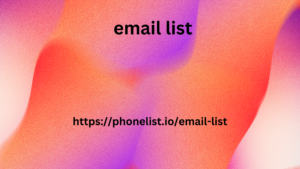Just as a person has a manner of speech, favorite expressions and filler words, so a brand should have a single style of communication that can be seen in everything. Whether it is a dry official language or a bright speech with epithets, an abundance of exclamation marks or emoji, frequent ellipses or full stops – everything should be verified to the smallest detail.
Tone of voice functions
It makes the brand recognizable and helps to differentiate itself from competitors. Tone of voice is the voice of the company that corresponds to the USP and values of the brand, as well as the tastes of its target audience. Most likely, your brand’s audience is diverse and can be divided into segments. The main criterion for dividing the audience into groups is the difference in fears and needs or different motivations for using the company’s products and services. Students who have received higher education; freelance specialists who have knowledge but are unable to independently improve their skills in their field; adults who want to learn a new profession because they are not satisfied with their current job. These people have different characters, characteristics, fears, motivations, but one product will suit everyone. The main thing is to present it correctly.
An email list is a group of email addresses, usually email list collected for marketing, communication, or promotional reasons. Companies use these lists to send newsletters, special offers, updates, and announcements to their subscribers or customers. Creating an email list usually means gathering addresses through sign-up forms, customer purchases, or other ways people agree to join.
Analyze the brand and its values
If this is difficult, imagine your brand as a person. Ask them questions: What do you do? Who is your target audience? What is your goal/mission? What do you work for? For example, Pampers’ global goal is to make moms’ lives easier. How are you useful to your audience? How are you different from your competitors? What are your brand values? Which ones do you want to share? What values are most relevant to your target audience?
Describe the brand as a real person
Where does he spend his free time? What is your social circle? How does he speak? (voice, speed, vocabulary) A brand portrait will help you understand how a company should position itself online: how to communicate, what to share, what stories to tell.
Determine the tone of communication
You need to determine the arithmetic mean – find here’s why your brand needs a virtual marketing partner a tone that will simultaneously suit all audience segments and correspond to the brand portrait. When you describe the tone of communication, do not forget to set boundaries. confident but not cocky; bold, but not provocative; an expert, but not a bore; funny, but not a jester. For example, the BMW brand behaves very confidently on social networks, but, unlike Burger King or Vizit, it does not provoke the audience. A description of tonality always includes a list of words, expressions, and constructions that should be used.
What are the tones of voice?
Brand is a pleasant, tactful, positive acquaintance with whom you exchange only good news and share appropriate jokes. You don’t see him often, but you like him. Key characteristics of a friend brand’s tone of voice: communicates informally, addresses kcrj the audience as “friends”, “gang”; talks about what happens behind the scenes of the company, shares insider information, is honest; publishes posts without dry facts, statistics and feigned pathos; posts videos and photos taken on a phone; frank in talking about failures; demonstrates love for work through the eyes of others (e.g. stories from co-workers); announces small achievements and news.
Brand provocateur
These companies build a policy of interaction on challenges. They are not afraid to cross social boundaries, the boundaries of decency and ethics. The target audience of such projects is mainly young people. They use humor on the edge of a foul, stand out for their originality and audacity, and often joke below the belt.
uses high-profile situations for posts, enters into battles between brands (McDonald’s vs Burger King); attracts attention with loud headlines and clickbait; makes jokes on the edge of foul; discusses sensitive topics to increase activity; often uses situational humor and plays on the agenda.
Serious brand
Dry presentation, informational style, laconicism – it is better not to joke with such brands and… not to communicate. It answers according to scripts, does not allow irony. Almost all state companies and brands with premium products use this style. This is not good: the audience of such companies is not always dry and refined. Such brands choose an unexpected way of communication, which is traced in all marketing activities of the company.
A good example is the fast food restaurants “Teremok”. The employees of the chain call guests “sirs” and “sirs”. A similar approach is used in social network. It’s hard to put a number on it, but if people are willing to communicate with you and are positive, expressing themselves, then you’re doing it right. It means people treat the brand like a person.
